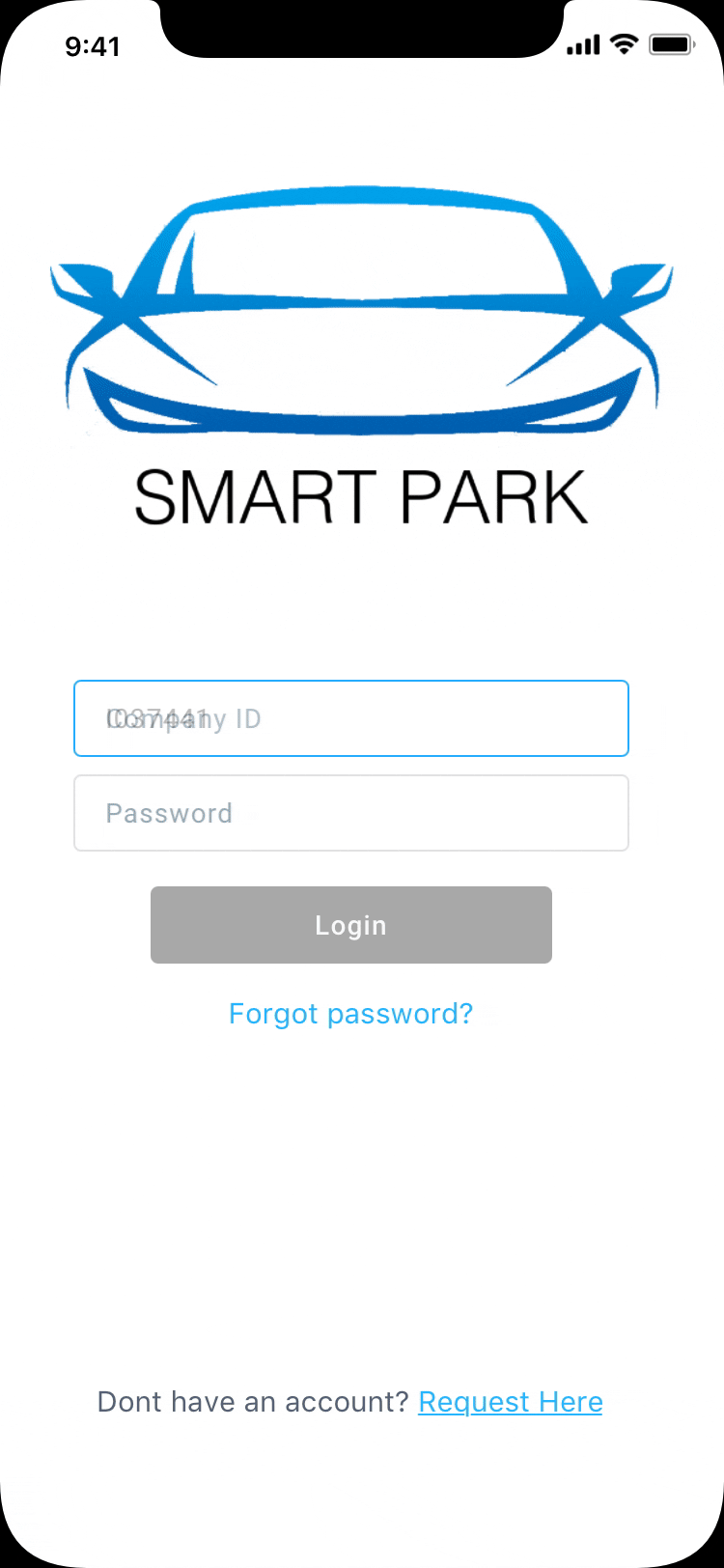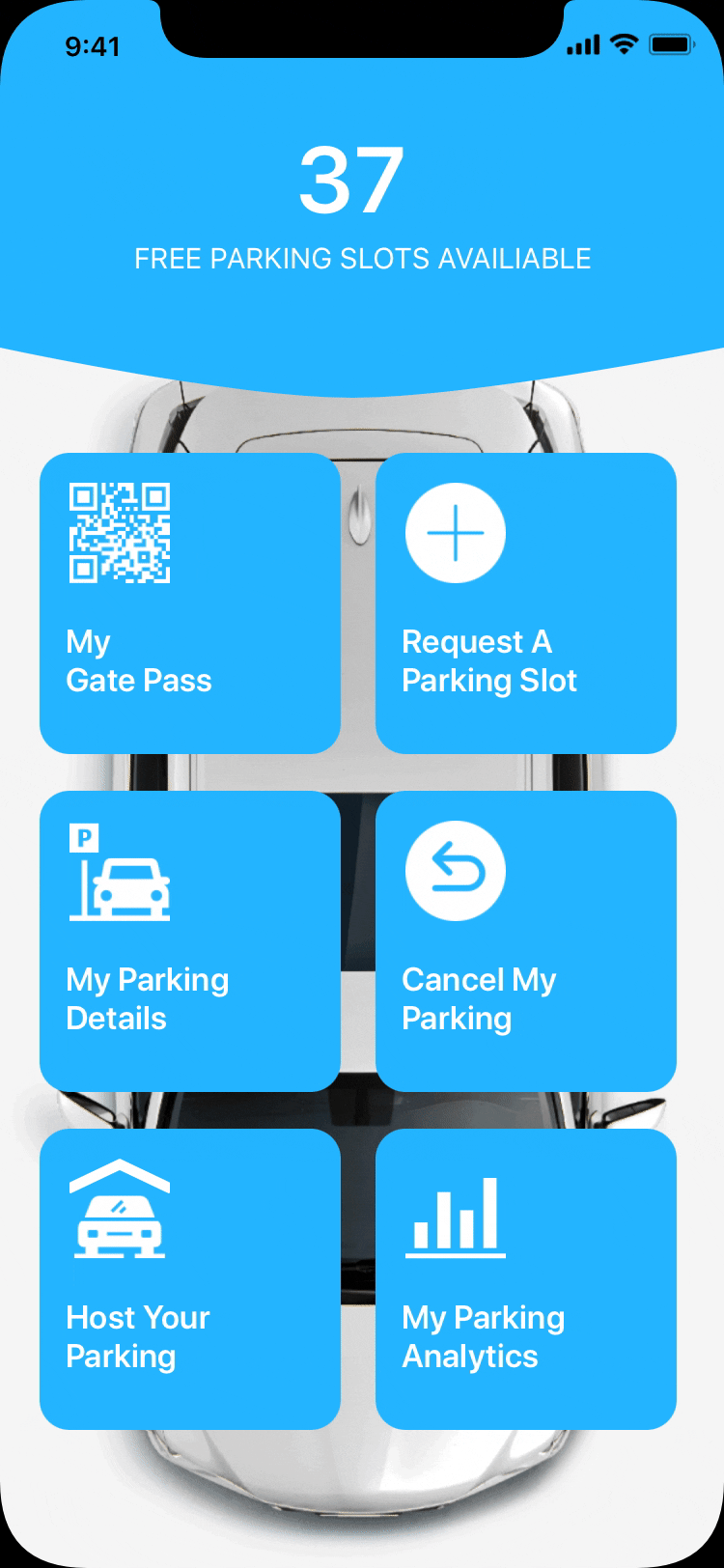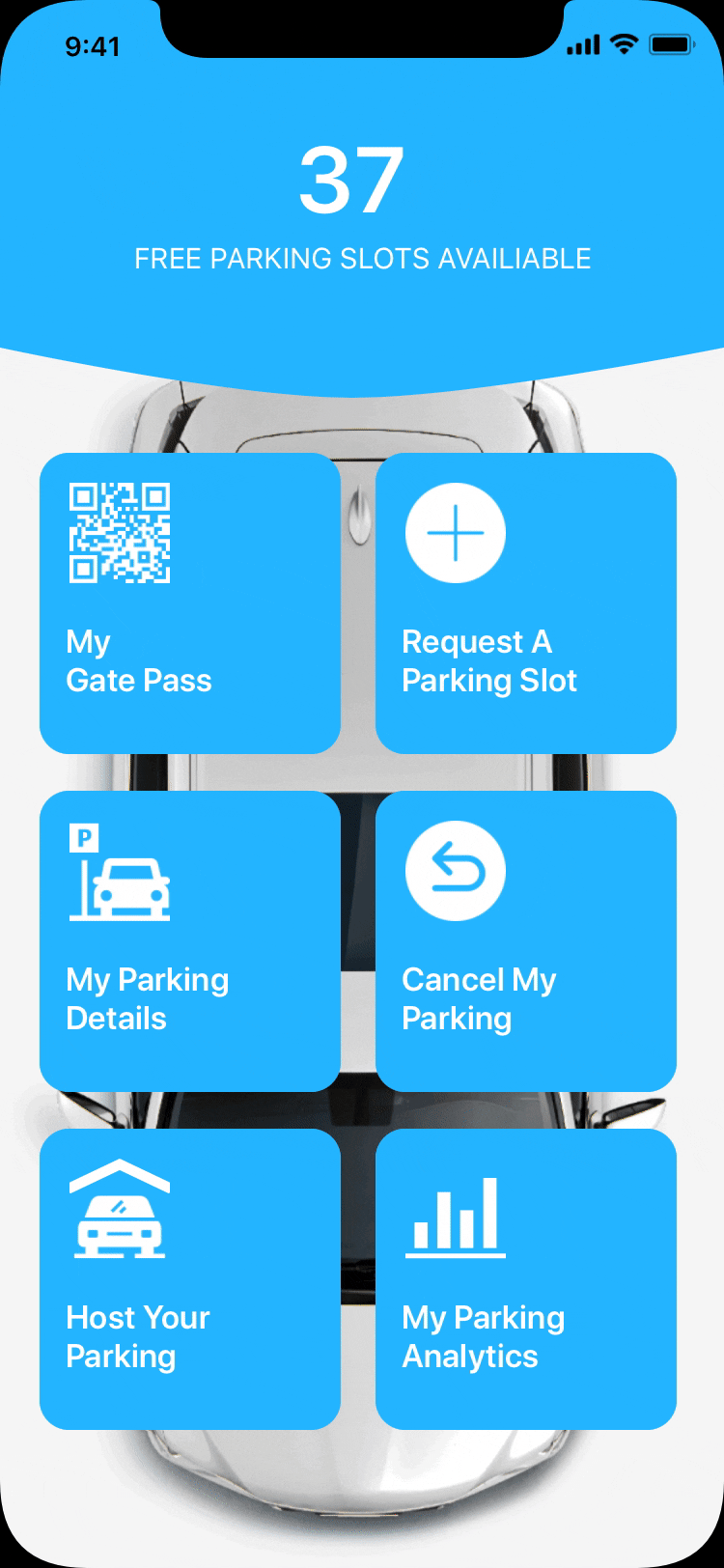
The Trigger
Designing experiments and exploring solutions outside of my role at SAP has been a rewarding experience, as it allows me to apply design and innovation strategies to practical problems faced by employees and colleagues. SMARTPARK is one such solution that I conceptualised end-to-end to solve the parking situation at the SAP office on St Kilda Road.
Limited car parking slots are available to SAP employees in the office building at St.Kilda, and these slots are allocated based on a manual queue system maintained in an Excel sheet by the reception. To request car parking as a new/existing employee, you have to write your name and vehicle details in a log book or send an email to register, and based on availability, the office reception would allot the parking slot. The parking slots are then permanently allocated to the employee and provided with a company logo front glass sticker and security gate access card. With no request process transparency, real-time slot availability view and status update on your parking request, it can be frustrating as an employee. It can take months to get an update unless you regularly follow up. I decided to come up with a simple system design to solve this problem.
My Role: Solution Innovator, Researcher and Product Designer
Time : 3 Weeks / Self Paced
Tools: Figma + Adobe Creative Suit
Car Parking Challenges/ Findings
After doing ground-level user research (1:1 interviewing technique) with existing car parking slot owners and other employees who wanted to bring their cars to the office, reception staff and the building car parking maintenance department, I clustered the feedback and challenges into four problem areas bucket as below.

-
Inefficient Space Utilisation: With the new hybrid working model, many employees have permanently allocated parking slots working from home, resulting in a significant number of empty parking spaces. This leads to wasted resources and prevents other employees who need parking and utilising the valuable space.
-
No centralised booking system: The lack of a centralised car space booking system and real-time slot visibility makes it difficult for employees to locate and reserve available parking spots. This leads to inefficient use of parking spaces, optimal parking experience, and financial loss to the company.
-
Manual Processes and Lack of Automation: From requesting car parking , assigning available slots, reassignment or release of car parking spaces is currently needs manual coordination and administrative tasks.
-
Lack of Digital Tools and Reporting Systems: The absence of a digital gate pass and centralised reporting systems hinders effective management and monitoring of parking operations and sustainability.
Gathering Ideas
Drawing on my design thinking expertise, I wanted to gather as many ideas as possible. I organized a 2-hour design thinking session with a select group of employees and other staff at the office. Their feedback and input were invaluable in refining the ideas and addressing any unforeseen challenges. As a result, I received many ideas to solve the parking problem. Using the voting technique to prioritize the most important ones that could be taken forward to build a solution.

Defining High Level Requirements
Based on the key priorities and findings from interviews and DT sessions, I have identified several key requirements that can help tackle the parking challenges. I started listed them as high level requirements that can be extrapolated later as features and interactions.

System Design
I also created a high-level system design to show how the whole parking system would work, the different touch points and how the data can be captured and stored in a centralized cloud server to be used for further analysis and insights. Though this is not an exact technical architecture diagram, the purpose here is to communicate to the audience how the system will interact with each other and envision the different touch points.

Final Design Concepts
Using the insights from user research, I employed prototyping methodologies to ideate and generate potential solutions. Collaborating with cross-functional teams, we brainstormed ideas, sketched rough concepts, and prioritised features based on user needs and business goals. Below are the prototypes that i created and tested with employees.


Employee Login Experience


Parking Slot Booking Experirnce


Digital Gate Pass Experience


Parking Analytics
Conclusion
After presenting the solutions to the Managing Director of SAP Australia and the Building Car Parking Facility Department, both parties were highly impressed with the proposed ideas. Recognising the value and potential impact, they expressed a strong desire to move forward and implement the solutions.
A separate delivery team handles the development of the internal solution, I handed over the solution concept and artefacts of the concepts and played an advisory role during the development phase to overlooking the overall experience quality and scalablity of the solution.
